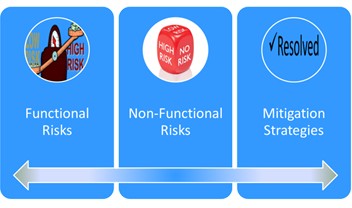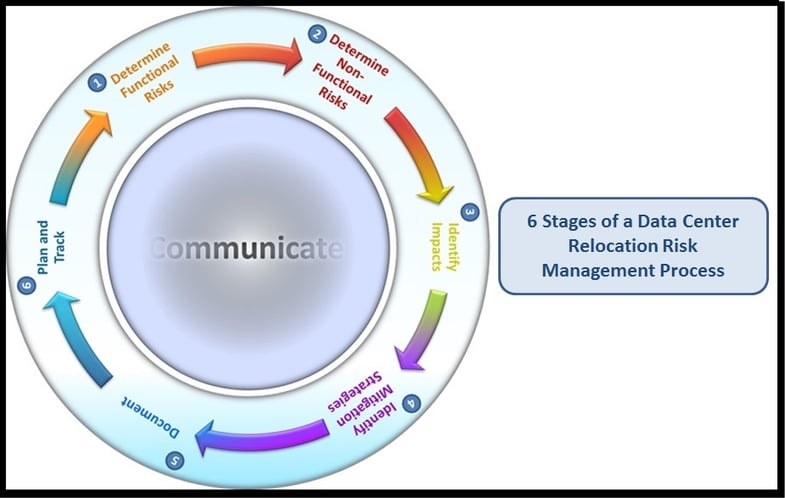
Data Center Relocation Risk Assessment Process Summary
Due to the high stakes involved in a move out of a Data Center (DC) to a new location, a Risk Assessment is highly recommended prior to the move being initiated. The Data Center Relocation “Risk Assessment” Process identifies what can go wrong and the steps identified to mitigate the potential issues.
Examples of some of the issues that can be encountered include:
- Racks may encounter obstacles moving to the loading dock due to DC retrofits.
- Servers may not power on after the move.
- Weather conditions may affect drive time delaying planned move time.
- Trucks may have breakdowns further delaying planned move time.
- Equipment weight such as enterprise storage may cause waves in data center flooring eventually crashing through a tile on the floor.
- A rack rail may become loose causing servers to come crashing down on one another within a rack.
- Racks in the existing data center may not be appropriate for the new data centre.
Usually, we think about the TECHNICAL RISKS or FUCTIONAL RISKS that can be encountered when making a move from one data center to another. There are a host of NON-TECHNICAL or NON-FUNCTIONAL issues that must also be considered and addressed to mitigate and minimize the potential for serious data center relocation delays.
Mitigation strategies must be developed for each potential risk, both technical and non-technical, to ensure that the data center relocation takes place effectively, efficiently and within the planned time frame.

There are six stages in the Data Center Relocation “Risk Assessment” Process:
- The 1st stage of the data center relocation risk assessment process is to determine the functional risks associated with the relocation. Functional risks are those that are related to the operation of the equipment throughout the move cycle and what could impact its operation post move. An example may be a damaged power plug for a server that occurred as a result of the move.
- The 2nd stage of the move is to identify the non-functional risks that could occur as a result of the relocation. These are risks that may occur that are not directly related to the operation of the equipment post move. An example would be a truck breakdown during the drive from the source data center to the target data center.
- The 3rd stage of the risk assessment process is to identify the impacts for all of the functional and non-functional risks identified.
- The 4th stage is to identify the mitigation strategies for each of the risks.
- The 5th stage is to document the details of each risk, associated impacts and the mitigation steps to be taken in the event there is an occurrence as demonstrated in the figure above.
- The 6th stage of the Data Center Relocation “Risk Assessment” Process is to develop the mitigation plan, execute the plan if and when a risk evolves to a real issue and monitor and track progress against the mitigation plan.
The information identified and documented in the six stages described above serve as preparation for the mitigation actions to be invoked for resolving any risks that evolve to real issues during the execution of a data center relocation, ultimately leading to a successful and timely relocation.






